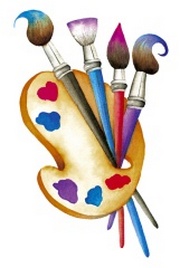Belkis Ayon's works exhibition in Havana
- Submitted by: admin
- Arts and Culture
- Culture and Traditions
- Havana
- national
- Paint and Sculpture
- personalities
- Personalities
- 11 / 27 / 2009

Ten years ago, one of Cuba's leading young artists took her own life, with no warning to family or friends. Her name was Belkis Ayon, and a major exhibit of her work is now under way in Havana. The event has revived an enduring mystery in Cuba — about art, African myths and the shadowy, all-male secret society known as Abakua.
At the time of her death, Belkis Ayon was 32 years old, and already a star in the Cuban art world. New York's Museum of Modern Art had acquired one of her prints, and her work was sought by collectors and galleries in the U.S. and Europe. Ayon's rise coincided with the worst years of Cuba's post-Soviet economic crisis, and she developed a printmaking technique well-suited to the times.
"The proper materials that artists would need were not available at that time," explains Wilfredo Benitez of Cuba's Ludwig Foundation — an organization that promotes Cuban art. "Belkis had to find a solution to that problem. So she invented them. Her prints are printed on a kind of collage out of different materials."
Ayon used tiny bits of paper and glue to meticulously create the ridges, grooves and patterns that gave texture to her prints. But it was Ayon's subject matter that drew the most attention to her work — and raised concerns about her safety. Ayon had become fascinated with the world of Abakua, an all-male secret society that originated in what is now southern Nigeria. The tradition was brought to Cuba's port cities by African slaves who concealed it from their masters. While Freemasonry and other secret societies have faded in Cuba, Abakua remains strong.
Ayon's sister Katia said Belkis first learned about Abakua through books, and later with practitioners.
"Belkis' research was extensive," Katia Ayon says, "and she used the characters and myths of Abakua to express other things entirely. She created a whole visual universe, because Abakua doesn't have its own defined imagery."
The Abakua world Ayon depicted is of sharply contrasting black and white tones. Many of her characters appear with intense, even fearful expressions in their eyes. They lack mouths, which art historian Cristina Figueroa says is a commentary on the oral tradition's secrecy.
"These figures can look at you but cannot speak," Figueroa says. "So you have to interpret what they're trying to say through the expressions in their eyes."
Like other Afro-Cuban religions, Abakua is a form of syncretism that blends Christian and African traditions. Its founding myth is a familiar story of temptation and betrayal paralleling the Book of Genesis — only the culprit is not Eve, but an African princess, Sikan.
As Katia Ayon explains, the princess learns a powerful secret from an enchanted fish. She is sworn not to reveal the knowledge but cannot resist the temptation. That helps forge peace between warring tribes, but the princess is sacrificed for her transgression. While her death gives birth to the Abakua brotherhood, women are forever barred from it.
Over the years, Belkis Ayon's work became fixated on the myth of the princess and her demise. Ayon's large, multipaneled prints were filled with scenes of the princess' death and spiritual resurrection, along with sacred symbols like the fish. Then, on Sept. 11, 1999, the artist's subject and her own fate seemed to merge.
"I still remember the moment when we received that news, that shocking news that Belkis had shot herself," Benitez says. "She never gave any hint of depression. She was always laughing, that's the way I remember her. I couldn't believe it. I thought — maybe it's a little bit morbid — that some Abakua had killed her."
A police investigation ruled out the possibility that Ayon was targeted for disclosing some religious secret in her work. Rumors and theories about the motivation for her suicide have rippled through Cuba's art world ever since — speculating that Ayon was sick, or that she had fallen under some malevolent Abakua spell. None of that is true, her sister says.
Katia Ayon believes that her sister simply made a decision. No one in their family knows why. She didn't tell anyone, and she left no clues. It's a secret, she said, that her sister took to the grave.
The exhibit of Ayon's work will run through Nov. 28 at the San Francisco de Asis cathedral in Old Havana.
Source: www.wbur.org
Comments